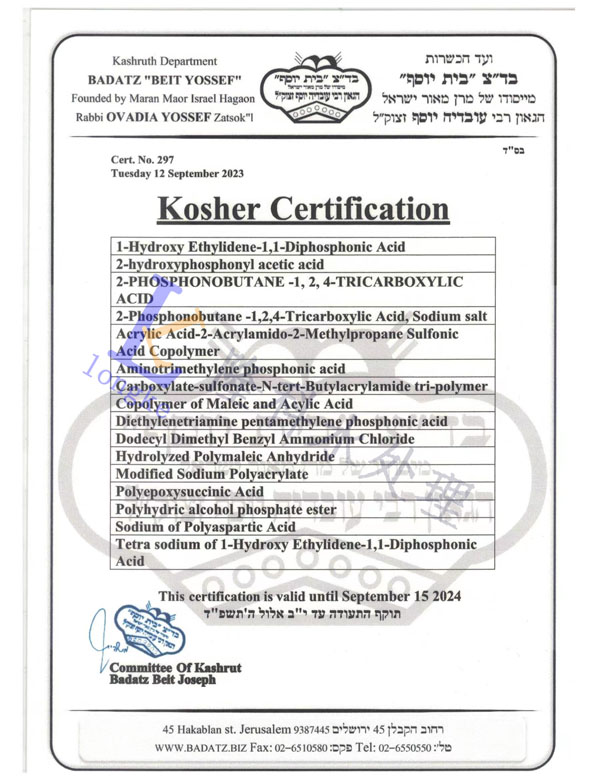polyaluminum chloride msds
Understanding the Safety and Handling of Polyaluminum Chloride A Focus on the MSDS
Polyaluminum chloride (PAC) is a widely used coagulant in water treatment processes across various industries, including drinking water production, wastewater treatment, and paper manufacturing. Due to its significance in public health and environmental protection, understanding the Material Safety Data Sheet (MSDS) for PAC is crucial for ensuring safe handling and usage in any setting.
Product Identification
Polyaluminum chloride is a generic term for a chemical compound with variable composition, primarily used as a flocculant. It is available in various formulations but typically appears as a white or yellowish solid, or as a pale yellow solution. The specific CAS number for PAC is 1327-41-9, and the compound is known for its highly soluble nature, making it effective in dissolving impurities when treating water.
Hazards Identification
The MSDS for polyaluminum chloride outlines several hazards associated with its use. Generally, PAC is not considered a hazardous material, however, it may cause irritation to the eyes and skin upon contact. Inhalation of dust or mist can lead to respiratory discomfort, while ingestion can result in gastrointestinal distress. Therefore, it is essential for handlers to take appropriate precautions, such as wearing protective gear, including gloves, goggles, and masks.
First Aid Measures
The first aid measures outlined in the MSDS are crucial for mitigating the effects of exposure to PAC. In case of skin contact, the affected area should be washed immediately with soap and plenty of water. For eye exposure, it is recommended to rinse the eyes thoroughly with running water for at least 15 minutes and seek medical attention if irritation persists. If inhaled, moving the individual to fresh air and ensuring they are comfortable is essential. If symptoms continue, medical assistance should be obtained. Ingestion cases warrant immediate medical attention, and the individual should not induce vomiting unless directed by a professional.
Firefighting Measures
polyaluminum chloride msds

Although polyaluminum chloride is not flammable, the MSDS suggests standard precautions during firefighting. Firefighters are instructed to use appropriate protective equipment and breathing apparatus in the event of a fire. The solution itself will not contribute to a fire, but surrounding materials may pose a risk.
Handling and Storage
Proper handling and storage practices are vital for safety when working with PAC. The material should be stored in a cool, dry, well-ventilated area, away from incompatible substances. Bulk quantities may require specific containment measures to prevent environmental contamination. Employees should be trained on proper handling techniques to minimize dust generation and the risk of exposure.
Personal Protective Equipment (PPE)
As outlined in the MSDS, personal protective equipment is essential when working with polyaluminum chloride. This includes wearing gloves, safety goggles, and respiratory protection, particularly in environments where dust or mist may be present. Regular training on the appropriate use of PPE is recommended to ensure that employees are well-informed about the risks and the necessary protective measures.
Disposal Considerations
Finally, the MSDS includes guidance on the proper disposal of polyaluminum chloride. It is advised that any waste material or used PAC be disposed of in compliance with local, state, and federal regulations to prevent environmental contamination.
Conclusion
In conclusion, understanding the MSDS for polyaluminum chloride is vital for maintaining safety in its application. By adhering to safety protocols, employing appropriate personal protective equipment, and following recommended handling and disposal practices, businesses can effectively mitigate risks associated with this essential chemical in water treatment processes.
-
LK-319 Special Scale And Corrosion Inhibitor For Steel Plants: Advanced Solutions for Industrial Water SystemsNewsAug.22,2025
-
Flocculant Water Treatment: Essential Chemical Solutions for Purification ProcessesNewsAug.22,2025
-
Isothiazolinones: Versatile Microbial Control Agents for Industrial and Consumer ApplicationsNewsAug.22,2025
-
Scale Inhibitor: Key Solutions for Water System Scale PreventionNewsAug.22,2025
-
Organophosphonates: Versatile Scale Inhibitors for Industrial Water SystemsNewsAug.22,2025
-
Scale and Corrosion Inhibitor: Essential Chemical Solutions for Water System MaintenanceNewsAug.22,2025





